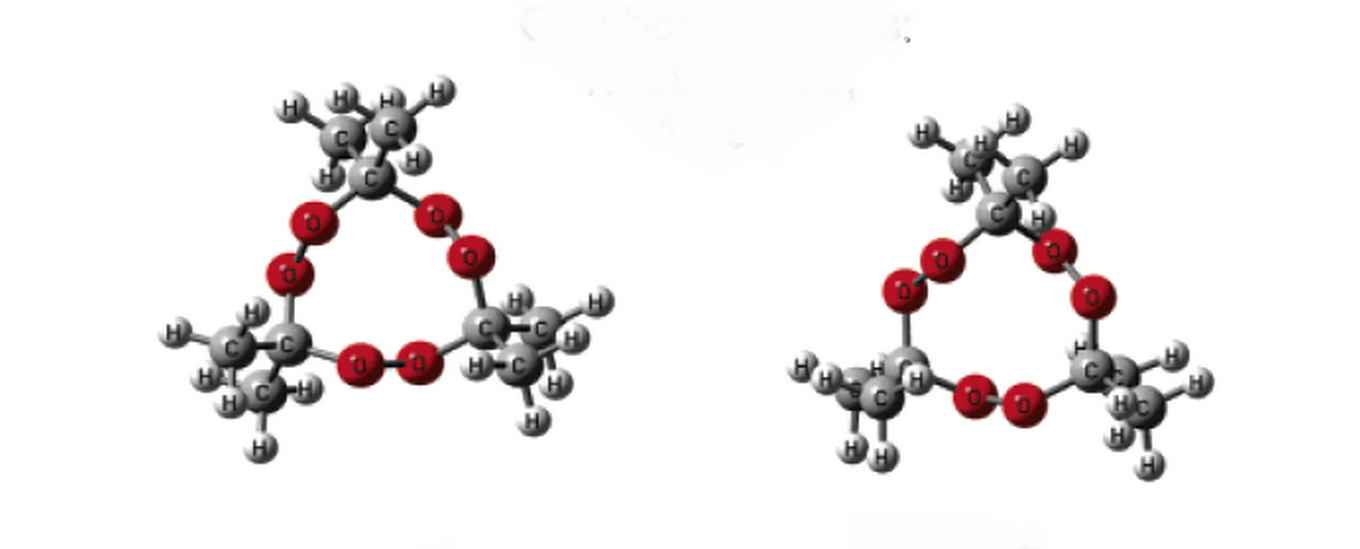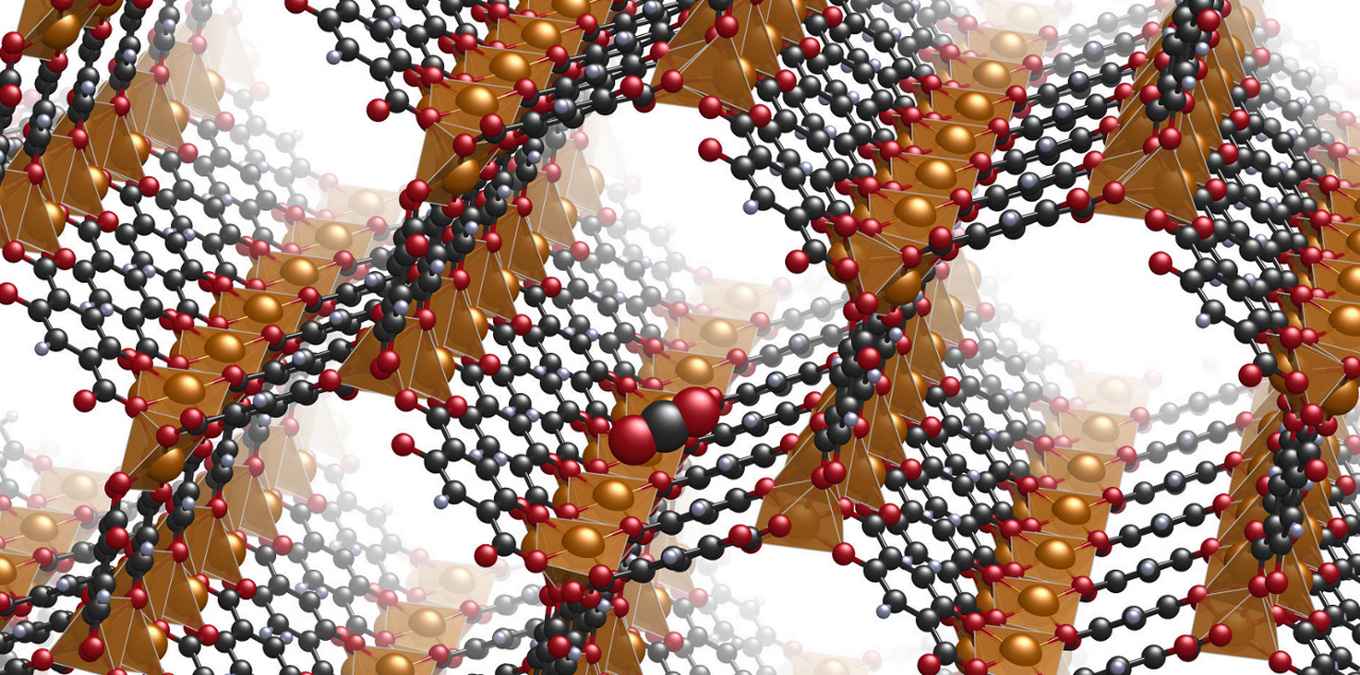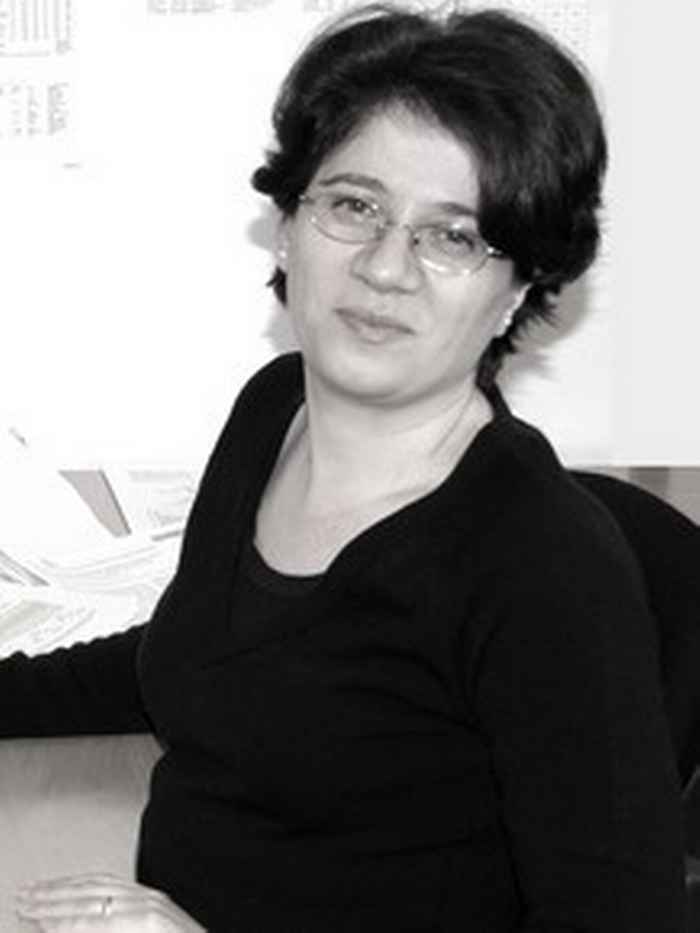Design of a novel MOF sensor for TATP detection

This project consists of two joint chemistry MSc internships aimed at the development of a selective MOF (metal-organic framework) sensor for the detection of the peroxide explosive TATP. TATP is a sensitive, high impact explosive that is popular among terrorists because of the availability of the precursors and its relatively simple synthesis and work up. TATP was used during the recent terrorist attacks in Paris and Zaventem airport in Belgium. Because the peroxide explosive TATP does not contain nitro groups as most other organic and inorganic explosives (e.g. TNT, RDX, PETN, AN) it is more difficult to detect in a security setting. Hence, there is a need for the selective, sensitive and non-invasive detection of peroxide based explosives (e.g. [1-7]). Fortunately, TATP has a relatively high vapour pressure indicating that the headspace concentrations are favourable for this compound. One internship will focus on theoretical molecular modelling to understand the geometry of the two TATP conformers [8,9] and the optimal design of a MOF for the selective trapping and detection of this volatile organic explosives. The second internship will use the results of the modelling studies to synthesize and test lanthanide-doped MOFs for the selective detection of TATP.

Both internships are briefly outlined below:

MOF design and TATP conformer study using molecular modelling –
Dr. David Dubbeldam
Force field-based molecular simulation is an effective tool to study nanoporous materials that act as adsorption-based sensors. This is because these simulations capture the correct length- and timescales for the relevant processes (adsorption, desorption, and diffusion at the molecular scale), while at the same time accurate interaction potentials are available to describe the interactions between species and with the metal-organic framework (MOF). A major advantage of these simulations is that one has direct access to the molecular scale. Monte Carlo (MC) simulations are typically performed in the (semi) grand-canonical ensemble, in which the temperature, pressure, and composition of the surrounding gas are specified [10]. During these MC simulations, species can be inserted or removed from the gas phase, transformed into other species, or diffuse inside the zeolite. These insertions, deletions, and transform-ations greatly benefit from advanced Monte Carlo techniques, like the Configurational-bias Monte Carlo (CBMC) or Continuous Fractional Monte Carlo (CFMC) techniques for adsorbates. Transport of species by either self- or transport diffusion can be studied by Molecular Dynamics (MD) simulations.
With our state-of-the-art simulation software (RASPA) [11], adsorption isotherms, self- and transport diffusivities, adsorption energies and enthalpies, and adsorption free energies can be computed for multicomponent mixtures as a function of temperature and pressure. The techniques work well even for bulky molecules and high loadings, and the number of species is in principle not limited. Accurate force fields required in these simulations are already available in literature for many relevant molecules. The crucial challenge is to combine all information on the molecular scale computed from simulations (free energies, adsorption isotherms, and diffusivities) in order to arrive at a model can that predict the TATP sensitivity (with respect to many other present molecules) and performance of a MOF. The model and gained knowledge will be used to look for ideal MOF-sensors, with the right topology, channel channel-size, and chemical composition, that can detect the presence of peroxide explosive TATP.

Synthesis and testing of Lanthanide doped MOFs for TATP detection –
Dr. Stefania Grecea
Metal-organic frameworks (MOFs) for optical sensing applications is an emerging research field that exploits the interaction between the inorganic and organic components. These materials are assembled from metal ions (optical centres) bridged across by organic molecules to form three-dimensional porous structures [12]. Lanthanide ions are commonly used as optically active centres because of their intense luminescence properties [13-15]. The permanent porosity of MOFs materials enables the reversible storage and release of guest molecules and also allows the differential recognition of molecules. Their optical properties are sensitive to the entrance and/or release of the guest molecules to and from the pores, and therefore can be used for molecular sensing. MOFs also have a large surface-to-volume-ratio available for molecular sensing. This can increase the sensitivity and response speed of the sensors tremendously, as compared with conventional sensor devices. Moreover, the size, composition, and shape of the materials can be tailored, thus tuning the sensitivity and the selectivity of the sensors.
This project will use well-established synthetic strategies to control the size and the functionality of the MOFs’ pores. It will allow tuning both the selectivity as well as the limit of detection for the TATP targeted analyte. The design and synthesis of the sensing MOFs will be performed using two synthetic strategies: hydrothermal synthesis and building-block approach [16-19]. The characterization of all MOFs materials will be done using elemental analysis, IR, Raman, UV-Vis and EPR, powder and single-crystal XRD, TGA and DSC analysis. Their porosity will be assessed by means of adsorption studies, including nitrogen, CO2 and TATP adsorption. The photophysical properties of the MOFs will be investigated in detail. These studies involve measurements of diffuse reflectance spectra and steady-state emission and excitation spectra of the MOFs at room temperature. Such measurements are important to asses the performance of the MOFs as TATP optical sensors. The sensing studies will also include luminescence titrations of colloidal suspensions of MOF with various analytes and selectivity studies.
REFERENCES
[1] A colorimetric sensor array for detection of triacetone triperoxide vapor - J Am Chem Soc - 132(2010)15519-15521
[2] Detection of triacetone triperoxide (TATP) with an array of sensors based on non-specific interactions - Sensors Actuators B - 140(2009)122-127
[3] Detection of triacetone triperoxide (TATP) using a thermodynamic based gas sensor - Sensors Actuators B - 162(2012)7-13
[4] Theoretical and experimental study of sensing triacetone triperoxide (TATP) explosive through nanostructured TiO2substrate - Talanta - 118(2014)304-311
[5] Determination of hydrogen peroxide and triacetone triperoxide (TATP) with a silver nanoparticles—based turn-on colorimetric sensor - Sensors Actuators B - 247(2017)98-107
[6] Solvent-Free Off-On Detection of the Improvised Explosive Triacetone Triperoxide (TATP) with Fluorogenic Materials - Chem Europ J - 23(2017)13973-13979
[7] A highly efficient fluorescent sensor of explosive peroxide vapor via ZnO nanorod array catalyzed deboronation of pyrenyl borate - Chem Commun - 48(2012)5739-5741
[8] Characterisation of triacetone triperoxide (TATP) conformers using LC-NMR - Science & Justice - 51(2011)50-56
[9] Two Separable Conformers of TATP and Analogues Exist at Room Temperature - Org Lett - 7(2005)2461-2462
[10] Review: On the Inner Workings of Monte Carlo Codes, 49(2013)1253-1291
[11] RASPA: molecular simulation software for adsorption and diffusion in flexible nanoporous materials - 42(2016)81-101
[12] Lanthanide-based metal organic frameworks: synthetic strategies and catalytic applications - ACS Catalysis – 6(2016)6063-6072
[13] Metal-organic frameworks materials as chemical sensors – Chem Rev – 112(2012)1105-1125
[14] Metal-organic frameworks: functional luminescent and photonic materials for sensing applications – Chem Soc Rev – 46(2017)3242-3285
[15] Functional hybrid nanostructure materials: advanced strategies for sensing applications towards volatile organic compounds – 342(2017)80-105
[16] Dual-mode humidity detection using a lanthanide-based metal-organic framework: towards multifunctional humidity sensors Chem Commun – 53(2017)4465-4468
[17] Mixed-lanthanoid metal-organic framework for ratiometric cryogenic temperature sensing – Inorg Chem – 54(2015)11323-11329
[18] Highly selective water adsorption in a lanthanum metal-organic framework - Chem Eur J – 20(2014)7922-7925
[19] A facile building-block synthesis of multifunctional lanthanide MOFs – J Mater. Chem – 21 (2011)15544-15551
REQUIRED/RECOMMENDED EXPERTISE
Chemistry, Catalysis, Molecular Modelling, Forensic Science, Explosives
| Department: | HIMS |
| Institute/Company: |
University of Amsterdam |
| Supervisor : | :Dr. Stefania Grecea, Dr. David Dubbeldam |
|
UVA Co-assessor : |
Arian van Asten |
| UVA Coordinator : | Arian van Asten/Yorike Hartman |